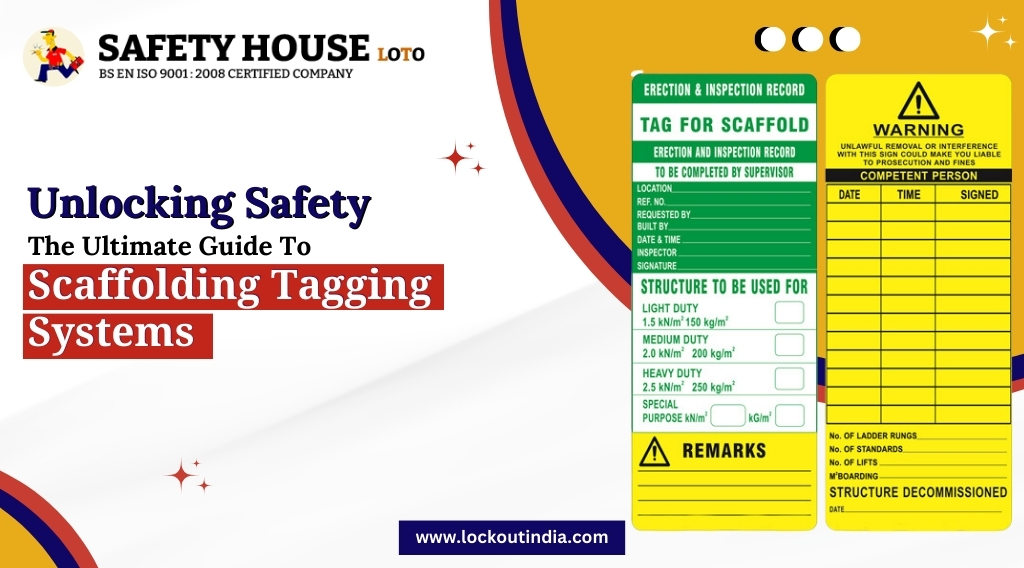
Unlocking Safety: The Ultimate Guide to Scaffolding Tagging Systems
Introduction:
In the realm of construction and industrial settings, safety is paramount. Scaffolding, a ubiquitous fixture in such environments, demands rigorous safety protocols to protect workers and prevent accidents. Enter scaffolding tagging systems, a vital component of safety procedures. In this comprehensive guide, we delve into the intricacies of scaffolding tag systems, their importance, implementation, and best practices.
What is a Scaffolding Tag?
A scaffolding tag is a visual indicator affixed to scaffolding structures, providing crucial information about its safety status and usage guidelines. Typically, these tags consist of color-coded segments and pertinent details such as inspection dates, safety precautions, and load-bearing capacities.
Importance of Scaffolding Tagging Systems:
- Enhanced Safety Awareness: Scaffolding tags serve as a constant reminder of safety protocols, fostering a culture of awareness among workers and supervisors.
- Compliance with Regulations: Regulatory bodies mandate the use of scaffolding tagging systems to ensure adherence to safety standards and regulations.
- Risk Mitigation: By clearly indicating the status of scaffolding structures, tags help identify potential hazards and mitigate risks before accidents occur.
- Efficient Maintenance: Regular inspections facilitated by scaffolding tags enable timely maintenance and repairs, prolonging the lifespan of scaffolding equipment.
- Accountability and Documentation: Tags provide a documented record of inspections, demonstrating compliance with safety regulations and liability in case of incidents.
Components of a Scaffolding Tag:
- Color-Coded Segments: Tags often feature color-coded segments to indicate the scaffolding’s safety status. Common colors include green for safe, yellow for caution, and red for unsafe.
- Inspection Details: Tags display essential information such as inspection dates, inspector signatures, and any identified issues or recommendations.
- Usage Guidelines: Instructions regarding maximum load capacities, prohibited activities, and safety precautions are prominently featured on scaffolding tags.
- Contact Information: Tags may include contact details for reporting safety concerns or seeking clarification on usage guidelines.
Implementing Scaffolding Tagging Systems:
- Training and Education: Ensure that all personnel involved in scaffolding operations receive comprehensive training on the significance of scaffolding tags and how to interpret them.
- Standardized Procedures: Develop standardized procedures for tagging scaffolding structures, including inspection frequencies, documentation requirements, and protocols for addressing identified issues.
- Quality Assurance: Regularly audit scaffolding tagging systems to verify compliance with established procedures and identify areas for improvement.
- Collaboration with Regulatory Bodies: Work closely with relevant regulatory bodies to stay abreast of updated safety regulations and ensure alignment with scaffolding tagging practices.
Best Practices for Scaffolding Tagging Systems:
- Frequent Inspections: Conduct regular inspections of scaffolding structures, adhering to predetermined schedules and documented procedures.
- Clear Communication: Ensure that scaffolding tags are prominently displayed and easily visible to workers, supervisors, and inspectors.
- Immediate Action on Red Tags: Red tags indicating unsafe conditions should prompt immediate corrective action, including cessation of work until issues are resolved.
- Documentation and Record-Keeping: Maintain detailed records of inspections, including dates, findings, corrective actions taken, and signatures of inspectors.
- Continuous Improvement: Solicit feedback from workers and inspectors to identify opportunities for enhancing the effectiveness of scaffolding tagging systems and safety protocols.
Conclusion:
In the dynamic landscape of construction and industrial environments, safety remains an indispensable priority. Scaffolding tagging systems, like those provided by Safety House Loto, serve as a cornerstone of safety protocols, providing essential information and visual cues to safeguard workers and prevent accidents. By understanding the importance, components, implementation strategies, and best practices of scaffolding tag systems, organizations can foster a culture of safety, compliance, and accountability. Unlock the potential of safety with robust scaffolding tagging systems from Safety House Loto, ensuring a secure and productive work environment for all.
